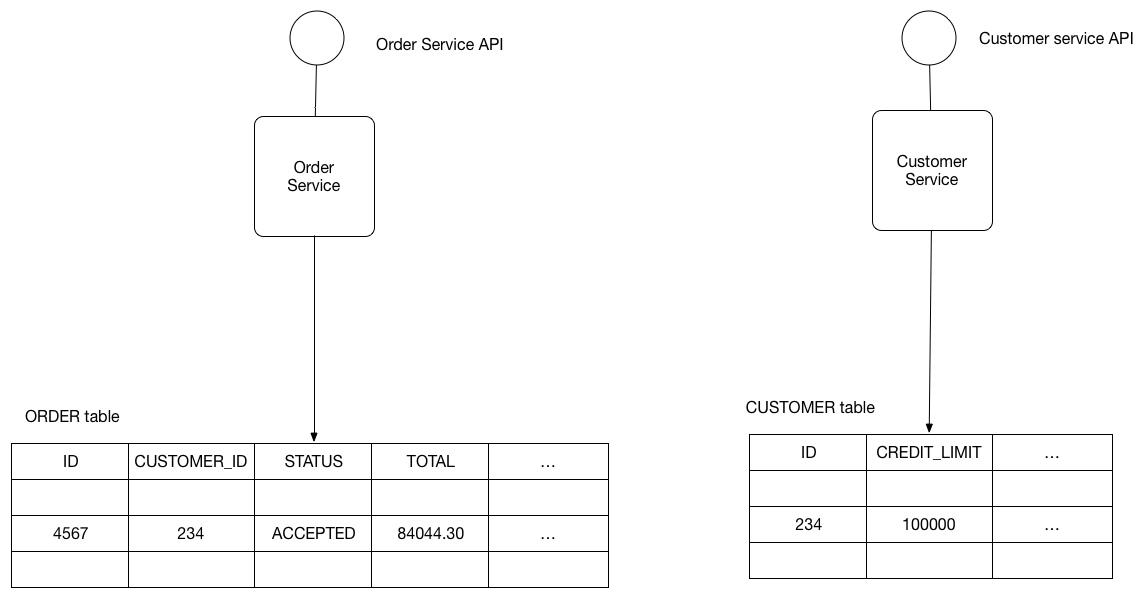Pattern: Shared database
patternContext
Let’s imagine you are developing an online store application using the Microservice architecture pattern.
Most services need to persist data in some kind of database.
For example, the Order Service stores information about orders and the Customer Service stores information about customers.

Problem
What’s the database architecture in a microservices application?
Forces
-
Services must be loosely coupled so that they can be developed, deployed and scaled independently
-
Some business transactions must enforce invariants that span multiple services. For example, the
Place Orderuse case must verify that a new Order will not exceed the customer’s credit limit. Other business transactions, must update data owned by multiple services. -
Some business transactions need to query data that is owned by multiple services. For example, the
View Available Credituse must query the Customer to find thecreditLimitand Orders to calculate the total amount of the open orders. -
Some queries must join data that is owned by multiple services. For example, finding customers in a particular region and their recent orders requires a join between customers and orders.
-
Databases must sometimes be replicated and sharded in order to scale. See the Scale Cube.
-
Different services have different data storage requirements. For some services, a relational database is the best choice. Other services might need a NoSQL database such as MongoDB, which is good at storing complex, unstructured data, or Neo4J, which is designed to efficiently store and query graph data.
Use a (single) database that is shared by multiple services. Each service freely accesses data owned by other services using local ACID transactions.
The OrderService and CustomerService freely access each other’s tables.
For example, the OrderService can use the following ACID transaction ensure that a new order will not violate the customer’s credit limit.
BEGIN TRANSACTION
…
SELECT ORDER_TOTAL
FROM ORDERS WHERE CUSTOMER_ID = ?
…
SELECT CREDIT_LIMIT
FROM CUSTOMERS WHERE CUSTOMER_ID = ?
…
INSERT INTO ORDERS …
…
COMMIT TRANSACTION
The database will guarantee that the credit limit will not be exceeded even when simultaneous transactions attempt to create orders for the same customer.
The benefits of this pattern are:
- A developer uses familiar and straightforward ACID transactions to enforce data consistency
- A single database is simpler to operate
The drawbacks of this pattern are:
-
Development time coupling - a developer working on, for example, the
OrderServicewill need to coordinate schema changes with the developers of other services that access the same tables. This coupling and additional coordination will slow down development. -
Runtime coupling - because all services access the same database they can potentially interfere with one another. For example, if long running
CustomerServicetransaction holds a lock on theORDERtable then theOrderServicewill be blocked. -
Single database might not satisfy the data storage and access requirements of all services.
-
Database per Service is an alternative approach


 Premium content now available for paid subscribers at
Premium content now available for paid subscribers at 




